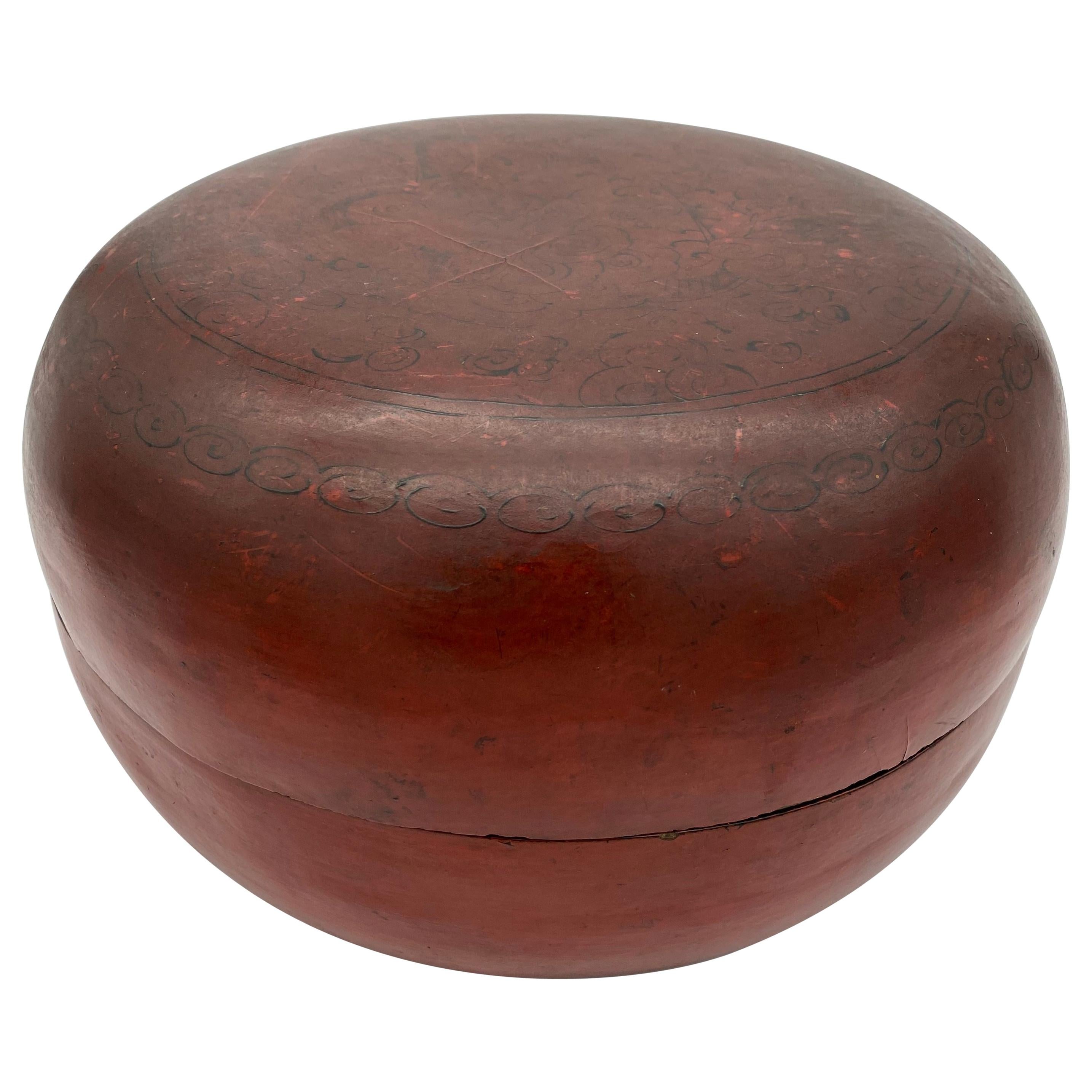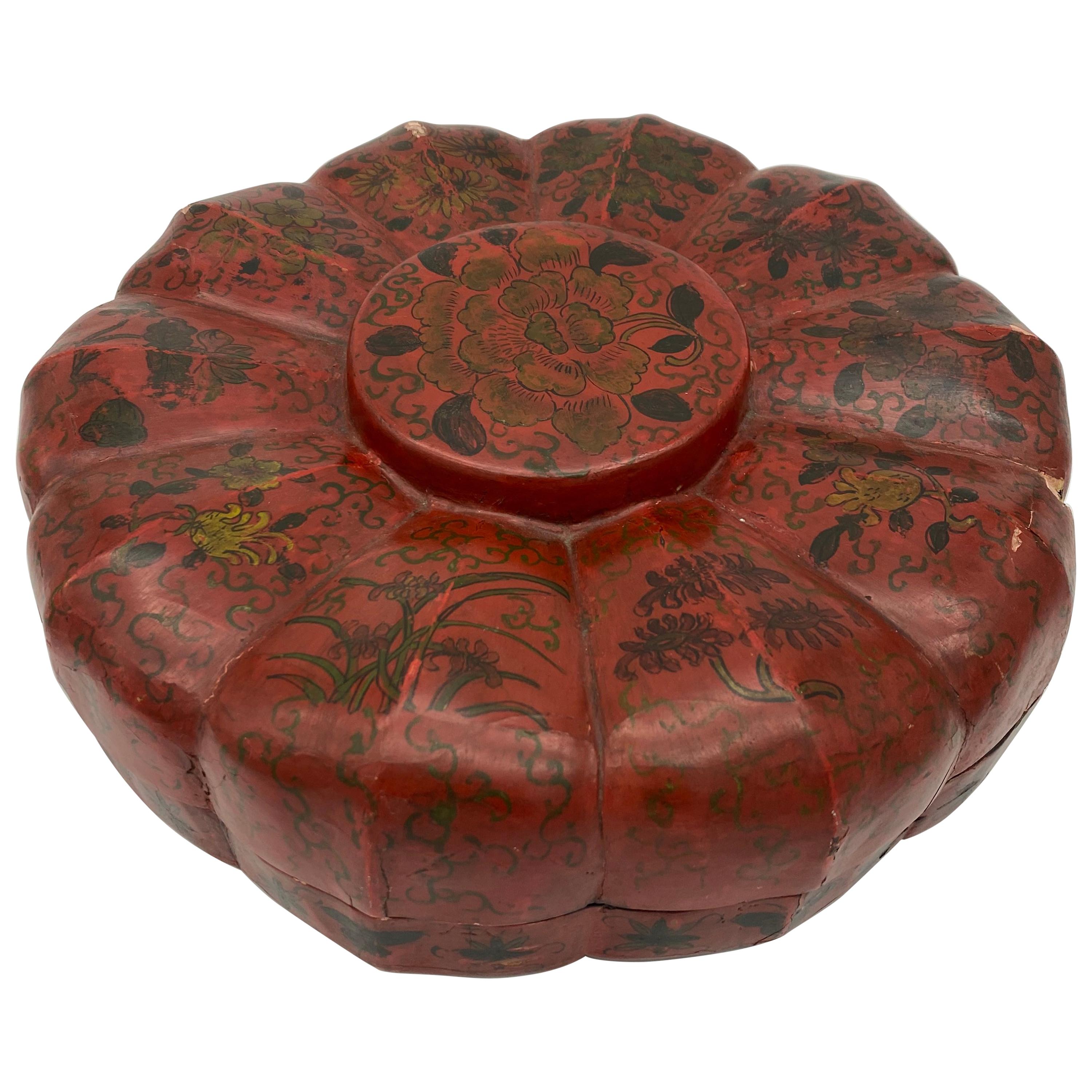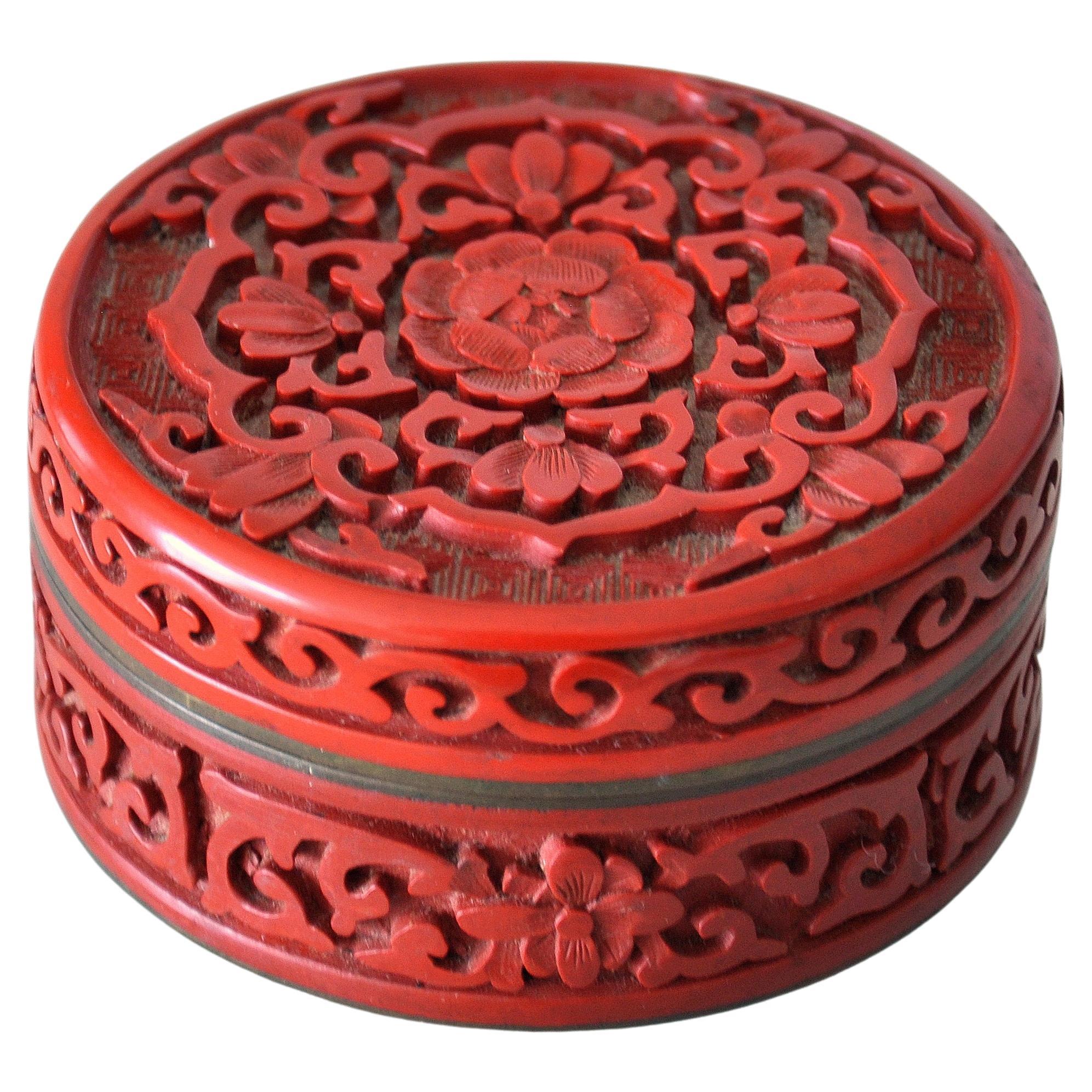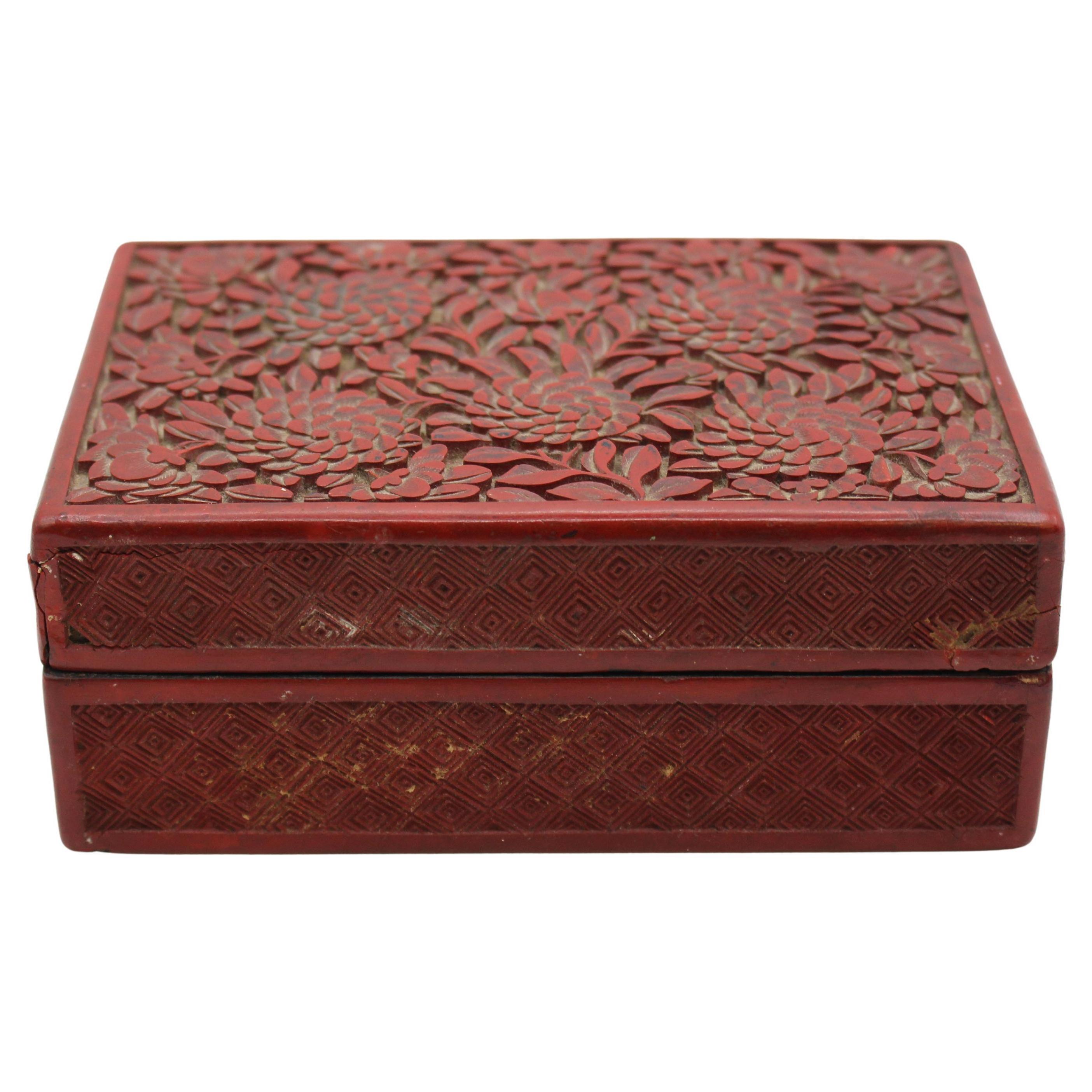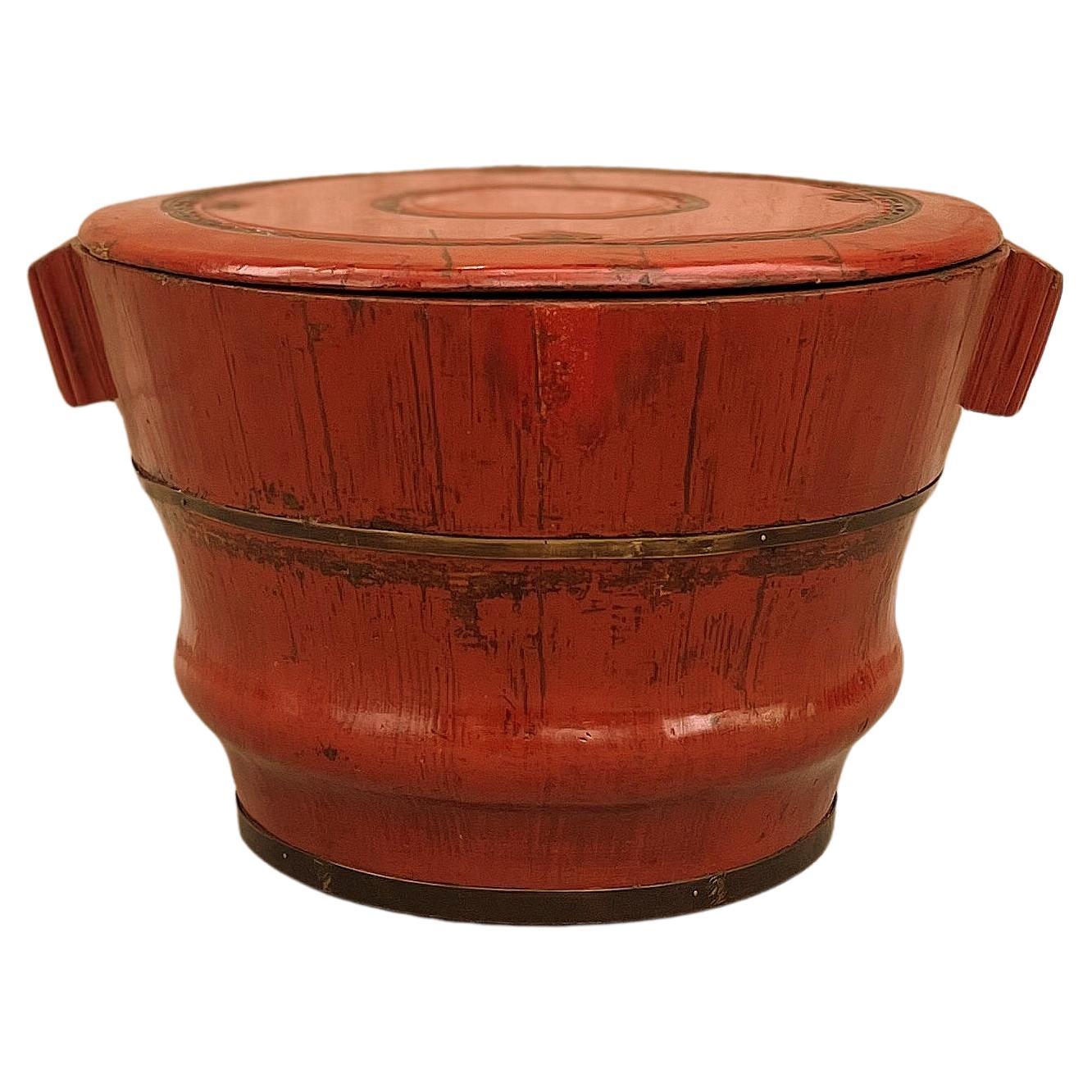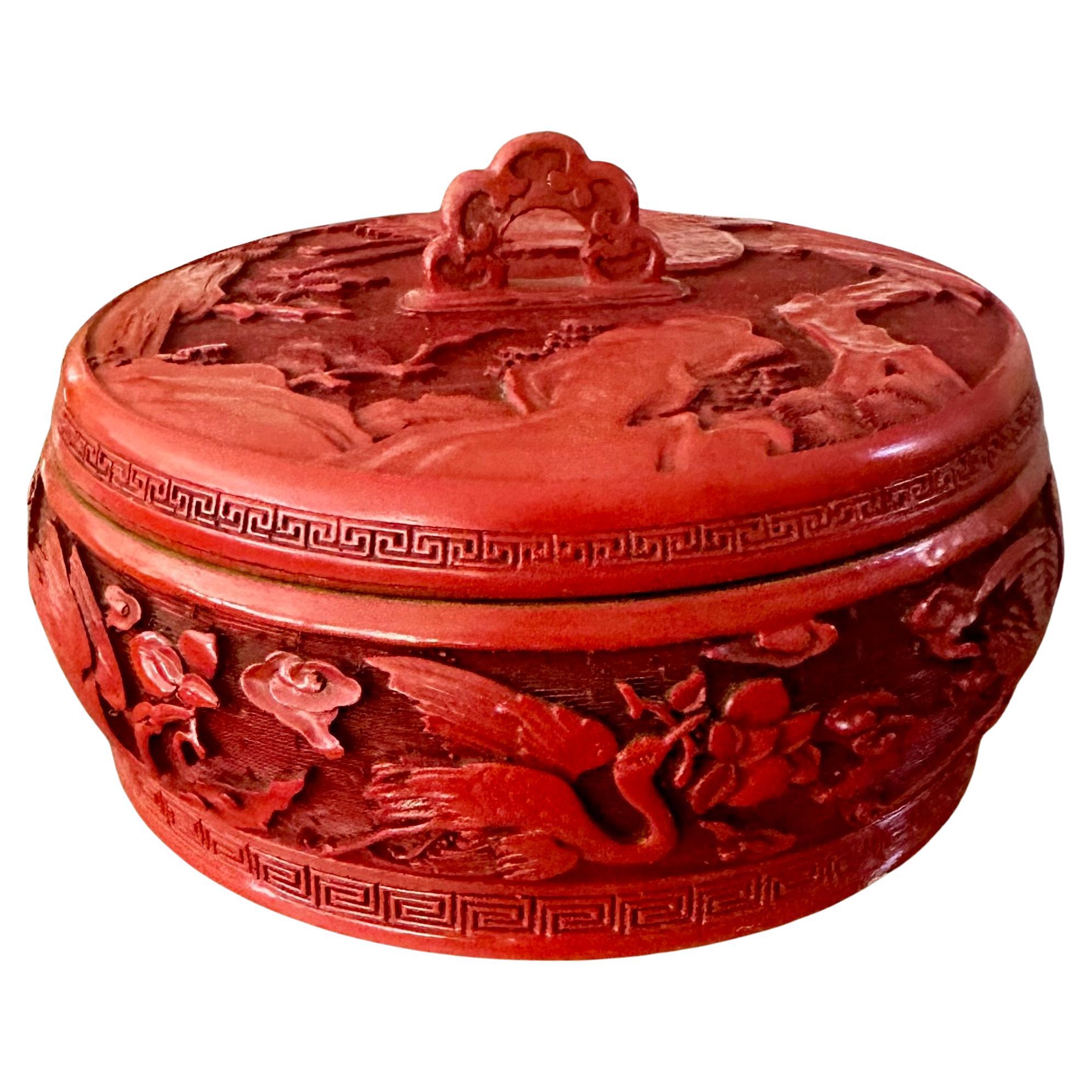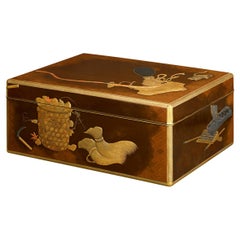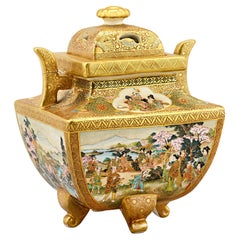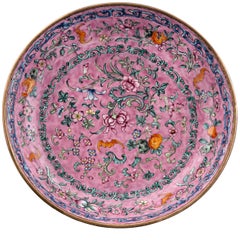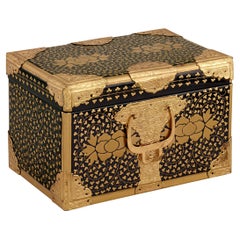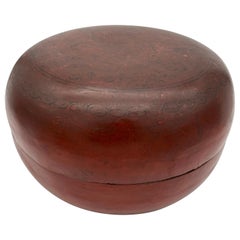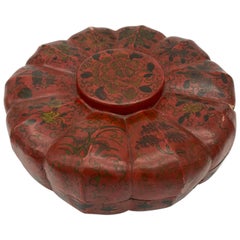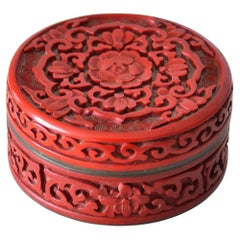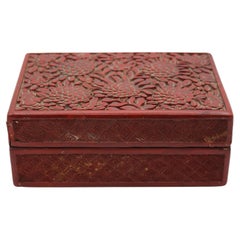Want more images or videos?
Request additional images or videos from the seller
1 of 5
Chinese Cinnabar Lacquer Cuspidor
$14,850
£11,213.35
€12,922.16
CA$20,959.66
A$23,107.55
CHF 12,089.12
MX$283,486.71
NOK 152,178.12
SEK 142,310.61
DKK 96,503.05
About the Item
This intriguing Chinese zhadou is intricately carved of fine cinnabar lacquer. A work of exceptional artistry, this covered bowl is adorned with an intricately carved floral motif on all surfaces, including the cover and the wide rim. Also known as a cuspidor or spittoon, this rare container would have been used by members of the imperial family and scholar- officials at the court. Carved during the Kangxi period (1662-1722), this charming piece exhibits the high detail and charm associated with items from that period, making it a true treasure,
Early 18th century (Kangxi dynasty)
Measures: 6 ¼” wide x 3 ¼” high
Cinnabar has been revered for its color all over the world. It has been found in the royal burial chambers of the Mayas, in the rituals of India, and in the ruins of ancient Greece and Rome. In China, cinnabar and gold were the two most important elements in alchemy. Mined since the Neolithic Age, cinnabar is the ore of mercury, and as such, it can be incredibly toxic, especially when mining. In fact, during the Roman Empire, miners at Spain’s Almadén mine in Spain were frequently exposed to mercury fumes, and the subsequent, often fatal, sickness was considered an occupational hazard.
The most popular known use of cinnabar is in Chinese carved lacquer-ware, a technique that is believed to have originated in the Song Dynasty, in which cinnabar is ground to a powder and added to clear lacquer. As with mining, there was inherent danger of mercury poisoning for those who carved the lacquer, as mercury was also released into the air when artisans ground the pigments. Most antique cinnabar lacquer-ware in existence has been coated with a clear protective film, so that mercury is prevented from leaking out of it, especially if handling of it is kept to a minimum.
A spittoon of the same type of construction is illustrated in Treasures of the Chinese Scholar by Fang Jing Pei, page 151.
- Dimensions:Height: 3.25 in (8.26 cm)Diameter: 6.25 in (15.88 cm)
- Style:Other (In the Style Of)
- Materials and Techniques:
- Place of Origin:
- Period:
- Date of Manufacture:18th Century
- Condition:
- Seller Location:New Orleans, LA
- Reference Number:Seller: 29-94831stDibs: LU891123477222
About the Seller
5.0
Recognized Seller
These prestigious sellers are industry leaders and represent the highest echelon for item quality and design.
Established in 1912
1stDibs seller since 2010
111 sales on 1stDibs
Typical response time: 9 hours
- ShippingRetrieving quote...Shipping from: New Orleans, LA
- Return Policy
Authenticity Guarantee
In the unlikely event there’s an issue with an item’s authenticity, contact us within 1 year for a full refund. DetailsMoney-Back Guarantee
If your item is not as described, is damaged in transit, or does not arrive, contact us within 7 days for a full refund. Details24-Hour Cancellation
You have a 24-hour grace period in which to reconsider your purchase, with no questions asked.Vetted Professional Sellers
Our world-class sellers must adhere to strict standards for service and quality, maintaining the integrity of our listings.Price-Match Guarantee
If you find that a seller listed the same item for a lower price elsewhere, we’ll match it.Trusted Global Delivery
Our best-in-class carrier network provides specialized shipping options worldwide, including custom delivery.More From This Seller
View AllJapanese Lacquer Box
Located in New Orleans, LA
This exquisite Meiji-period lacquer document box known as a ryoshibako showcases the meticulous artistry of maki-e, a technique of raised lacquer decoration. Adorned with gold and vi...
Category
Antique 19th Century Asian Meiji Lacquer
Materials
Gold
$39,850
Satsuma Incense Burner
Located in New Orleans, LA
This Japanese Satsuma incense burner is a decorative work of art from the Meiji period, distinguished by its exquisite craftsmanship and intrica...
Category
Antique 19th Century Japanese Meiji Ceramics
Materials
Earthenware
$3,450
18th Century Chinese Canton Enamel Plate
Located in New Orleans, LA
This enchanting Chinese plate, known as Canton enamel, evokes the intrigue and exclusivity of the 18th- century Imperial court. Boasting a magnificent fa...
Category
Antique 18th Century Other Dinner Plates
Materials
Enamel
Edo-Period Lacquerware Chest
Located in New Orleans, LA
Edo-Period Lacquerware Chest
19th-century
This exquisite chest, inspired by Hasami-Bako travel trunks, is a striking example of Japanese lacquerware. The hiramaki-e technique—applie...
Category
Antique 19th Century Japanese Edo Decorative Boxes
Materials
Gold
Gold Lacquer Incense Box
Located in New Orleans, LA
A Gold Lacquer Kōbako (Incense Box)
Edo Period (1615–1868), Circa 1850
This exquisite gold lacquer kōbako (incense box) exemplifies the refined craftsmans...
Category
Antique 19th Century Japanese Edo Decorative Boxes
Materials
Gold, Silver, Gold Leaf
$9,850
Japanese Lacquer Tray
Located in New Orleans, LA
Hailing from illustrious Meiji-period Japan, this lacquer tray showcases the mastery of Japanese craftsmen. Precious materials are precisely inlaid in the lacquer base, creating an a...
Category
Antique Late 19th Century Japanese Meiji Lacquer
Materials
Silver
$19,800
You May Also Like
19th Century Chinese Red Lacquer Box
Located in Brea, CA
Chinese red lacquer box. Measures: 11.5 x 11.5 x 6.5 inch.
Category
Antique Late 19th Century Chinese Qing Lacquer
Materials
Lacquer
Qing Dynasty Chinese Red Lacquer Box
Located in Brea, CA
Chinese red lacquer box from Qing dynasty. Includes nine-pieces. Before in excellent condition. But when I take pictures, accidentally fell t...
Category
Antique Early 17th Century Chinese Qing Lacquer
Materials
Lacquer
Antique Chinese Cinnabar, Brass and Enamel Box
Located in Miami, FL
A crisply carved antique Chinese red cinnabar lacquer lidded round box with blue enamel interior and brass fittings. The "dragon's blood" trinket box has a fine peony, foliate and fl...
Category
Antique 19th Century Chinese Qing Lacquer
Materials
Brass, Enamel
Late 19th Century Chinese Cinnabar Carved Lacquer Box
By The Lacquer Company
Located in Chapel Hill, NC
Late 19th century Chinese cinnabar carved lacquer box. The top a swirls of chrysanthemums; the sides a series of concentric squares or diamonds depending on perspective across the wh...
Category
Antique Late 19th Century Chinese Qing Lacquer
Materials
Lacquer
Red Lacquer Grain Container
Located in Greenwich, CT
Antique red lacquer wood container was used to store rice or grains. The red lacquer container with two side short handles round shape, construct...
Category
Antique Early 1900s Chinese Ceramics
Materials
Wood
Chinese Cinnabar Lacquered Enameled Lidded Box
Located in Palm Springs, CA
Well crafted antique Chinese cinnabar lidded box with blue enamel interior. Intricately carved throughout with cranes, trees, foliate and floral pattern.
Category
Early 20th Century Chinese Vases
Materials
Brass
More Ways To Browse
Black Lacquer Chinese
Gold Rimmed China
Chinese Black And Gold Lacquered
Antique Mining
Antique Cinnabar
Antique Miners
Cinnabar Lacquer
Cinnabar Furniture
Chinese Cinnabar
Spanish Empire
Antique Poison
Antique China Ware
Chinese Cinnabar Furniture
Carved Cinnabar
Cinnabar Lacquer Furniture
Kangxi Bowl
Antique Chinese Cinnabar
Chinese Carved Cinnabar
